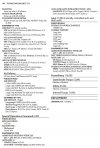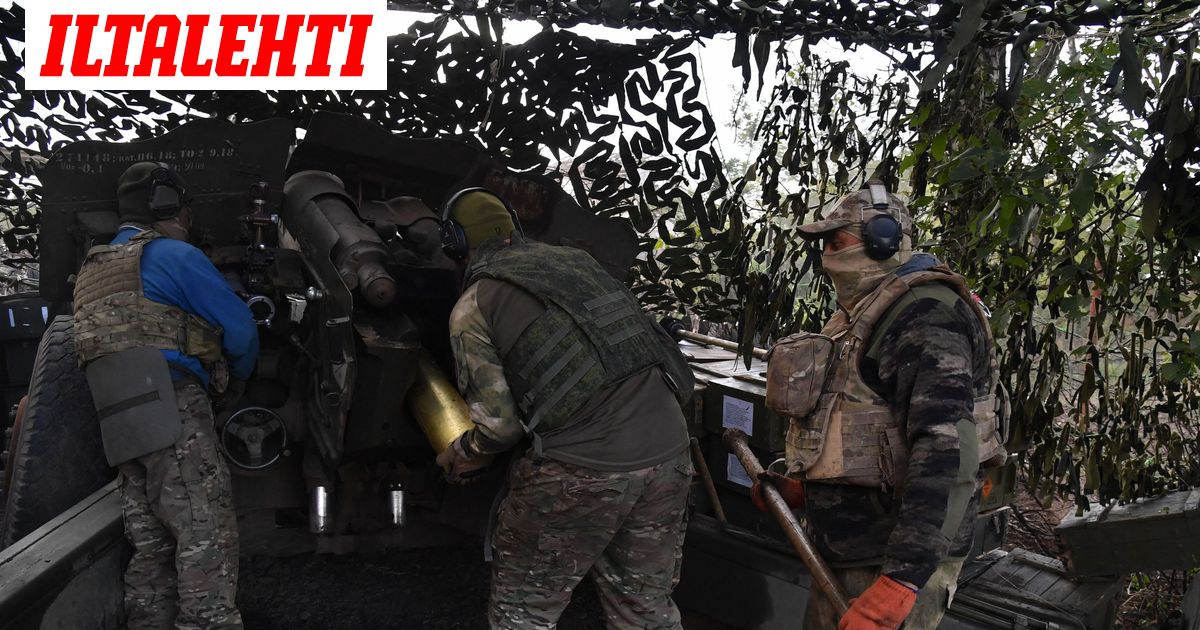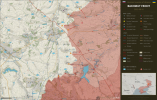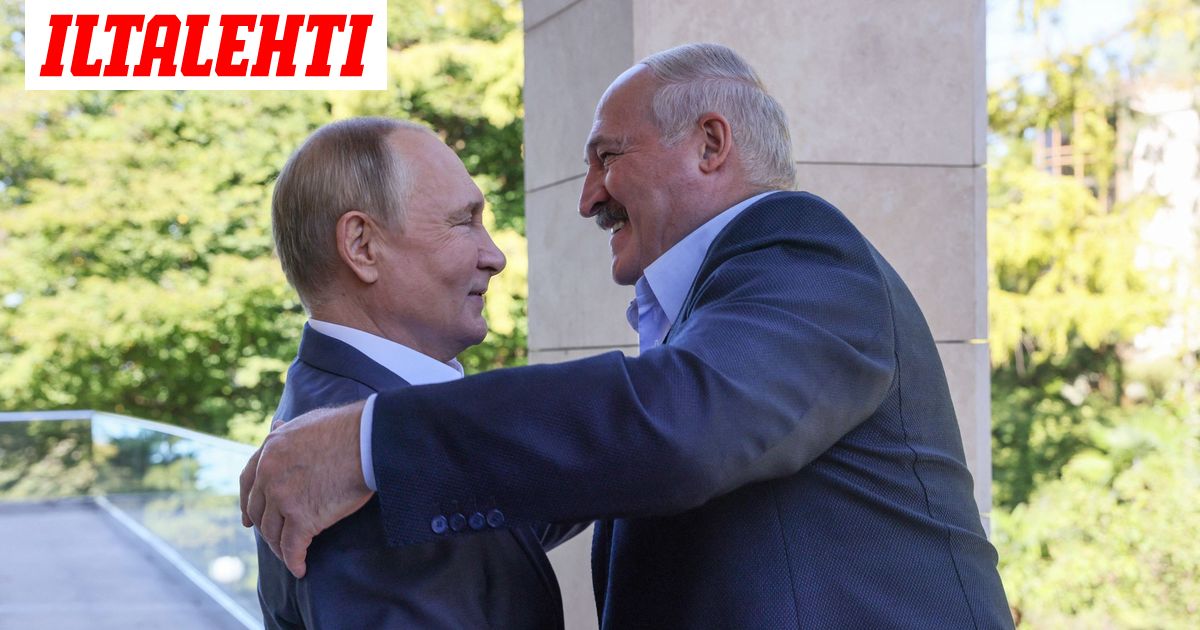Antares
Respected Leader
uapravdassa juttu putlerin painostuksesta saada VV liittymään sotaan.
SUNDAY, 9 OCTOBER 2022, 14:56
Russian President Vladimir Putin is encouraging his Belarusian counterpart Aleksandr Lukashenko to openly participate in the war against Ukraine, Defence Intelligence reports.
Source: Ukrinform, state-run news agency, citing Vadym Skibitskyi, representative of the Chief Intelligence Directorate
Quote from Skibitskyi: "We see measures that are being taken by the Russian Federation to force the leadership of Belarus to join in an open war. Meetings between Putin and Lukashenko, where this issue is discussed, are constantly being held, and Putin is trying to force Lukashenko to make this decision.
Military intelligence reports that as of October 9, there are 6 battalion tactical groups concentrated near its border. These are mechanised battalions as well as battalions of airborne troops of the so-called Command of Special Operations Forces.
How long this situation will last depends on how events develop at the front and, in general, how events develop in Russia's war against our state."
Background:
The Ministry for Foreign Affairs of Ukraine reported that Belarus had summoned the Ukrainian ambassador and accused Ukraine of allegedly preparing an attack on the territory of Belarus. The Ministry for Foreign Affairs of Ukraine considers this a possible part of the Russian provocation plan. Lithuanian Defence Minister Arvydas Anušauskas connected Belarus's accusations of Ukraine's alleged preparations for attack to a change in Russia's tactics in the full-scale war.
Kaipa tämä pitää ottaa vakavasti, vaikka edelleen epäilyttää. Lainaan tähän alle sen mitä Military Balance 2021 kirjoittaa Valko-Venäjästä (kaksi sivua):


Tuo kuvausteksti voi olla hieman pientä, joten tässä se tekstimuodossa:
Capabilities
Located between Russia and NATO European members, the main task of Belarus’s armed forces is maintaining territorial integrity, though army units were visible in the government’s attempt to curb civil protests during the latter part of 2020. The country’s latest military doctrine was approved in July 2016 and identified as security challenges ‘hybrid methods’ and ‘colour revolutions’. A new plan for the development of the armed forces until 2030 was approved in late 2019. The previous plan, dating from 2008, was due to be completed in 2020. Belarus is a member of the CSTO. Russia remains the country’s principal defence partner, though Minsk has also looked to improve defence cooperation with China and Turkey.
The forces remain conscript-based and train regularly with other CSTO partners. There has been increased emphasis on the training of territorial-defence troops to allow them to better operate with the regular forces. There is a small heavy-airlift fleet that could be supplemented by civil transport aircraft, and Minsk has a special forces brigade trained for the air-assault role. There is no requirement to independently deploy and sustain the armed forces, but Belarus could do so as a part of the CSTO. Russia continues to be Minsk’s main defence-equipment supplier. In recent years, Belarus has received air-defence systems and advanced combat-trainer / light-attack aircraft from Moscow. The local defence industry manufactures vehicles, guided weapons and electronic-warfare systems, among other equipment. However, there is no capacity to design or manufacture modern combat aircraft. The sector also undertakes upgrade work for foreign customers.
Located between Russia and NATO European members, the main task of Belarus’s armed forces is maintaining territorial integrity, though army units were visible in the government’s attempt to curb civil protests during the latter part of 2020. The country’s latest military doctrine was approved in July 2016 and identified as security challenges ‘hybrid methods’ and ‘colour revolutions’. A new plan for the development of the armed forces until 2030 was approved in late 2019. The previous plan, dating from 2008, was due to be completed in 2020. Belarus is a member of the CSTO. Russia remains the country’s principal defence partner, though Minsk has also looked to improve defence cooperation with China and Turkey.
The forces remain conscript-based and train regularly with other CSTO partners. There has been increased emphasis on the training of territorial-defence troops to allow them to better operate with the regular forces. There is a small heavy-airlift fleet that could be supplemented by civil transport aircraft, and Minsk has a special forces brigade trained for the air-assault role. There is no requirement to independently deploy and sustain the armed forces, but Belarus could do so as a part of the CSTO. Russia continues to be Minsk’s main defence-equipment supplier. In recent years, Belarus has received air-defence systems and advanced combat-trainer / light-attack aircraft from Moscow. The local defence industry manufactures vehicles, guided weapons and electronic-warfare systems, among other equipment. However, there is no capacity to design or manufacture modern combat aircraft. The sector also undertakes upgrade work for foreign customers.
Vertasin näitä numeroita Military Balance 2022 julkaisun kanssa ja pientä liikehdintää on tapahtunut, mutta ei merkittävästi kokonaisuutta muuttavaa:
2021 --> 2022
Army: 10 700 --> 11 700
Air: 11 750 --> 11 300
Special operations forces: 5 900 --> 6 150
Joint: 17 000 --> 18 800
Paramilitary ja Reserve ovat pysyneet samana.
Merkittävimpien ajoneuvotyyppien määrien muutokset:
T-72B: 517 --> 477
BMP-2: 932 --> 926 (näiden lisäksi IFV-kategoriaan on tullut uutena +31 BTR-82A)
Kaikkien muiden kategorioiden numerot ovat samat vuosien 2021 ja 2022 julkaisujen osalta.
-
Muutama kommentti numeroista: panssarivaunujen ja BMP-2 vaunujen kokonaismäärä on suuri, mutta mikä määrä näistä T-72B ja BMP-2 vaunuista on käyttökunnossa? Kun alkoivat toimittaa Venäjälle varastoistaan kranaatteja, ohjuksia ja muuta niin kuultiin että ne on varastoitu ala-arvoisella tavalla ja huomattava määrä oli kelvottomassa kunnossa. Koskeeko sama myös muuta kalustoa?
Panssarihaupitseja reiluhkosti, mutta näistä yli kolmasosa on 122mm - sama juttu raketinheittimien kanssa mutta pahemmin, valtaosa niistä on 122mm Grad.
Ohjusilmatorjunta näyttää hyvin samanlaiselta Ukrainan kanssa 2022 sodan alussa, tosin määristä ei ole tarkkaa tietoa.
Ilmavoimien osalta koneiden ikä ja kunto epäilyttää: mikä määrä näistä lentää? Helikoptereita on vähän.
Minun silmään heidän varustus näyttää hyvin paljon samalta kuin Ukrainalla vuoden 2014 sodan aikana: paljon vanhaa päivittämätöntä kalustoa varastot täynnä vaan kun pilliin vihelletään niin menee vaikeaksi saada aidosti toimivaa liikkeelle. Silloinkin valtaosa on kylmän sodan vuosilta. Miehistön osalta tilanne on varmasti hyvin sama ellei huonompi, joten Ukrainalla on selvä etulyöntiasema: he ovat käyneet yhdenlaista sotaa kahdeksan vuotta ja helmikuusta 2022 alkaen äärimmäisen modernia sotaa. Ukrainalla siis kohta kahdeksan kuukautta tuoretta taistelukokemusta hyvin modernista sodankäynnistä (ei tietysti ihan kaikilla joukoilla mutta hyvin suurella sotilasmäärällä kuitenkin).
Valko-Venäjä lähtisi sotaan kylmiltään.
Lisäksi pitää katsoa heidän "ammattiarmeijan" kokoa: maavoimissa 11 700. Mielestäni on selvää että heidän armeija, se mille löytyy varusteet on perinteinen reserviarmeija. Jos siis päättäisivät lähteä sotaan, pitäisi julistaa liikekannallepano ja kutsua reserviläiset hyökkäyssotaan naapuria vastaan. Moniko tulisi? Jos ei kukaan, niin ei heillä ole kuin muutama tuhat erikoisjoukkojen sotilasta, ilmavoimat sekä arvatenkin jokin määrä ammattisotilaita, joilla voisi kokeilla tehdä jotain.
Minä en vain kykene uskomaan että tuolta suunnalta tulisi mitään todellista, vakavaa ja uhkaavaa hyökkäystä. En näe, miten Lukashenko saisi kansansa käymään Ukrainan kimppuun vaikka Putin miten painostaisi.
Viimeksi muokattu:





